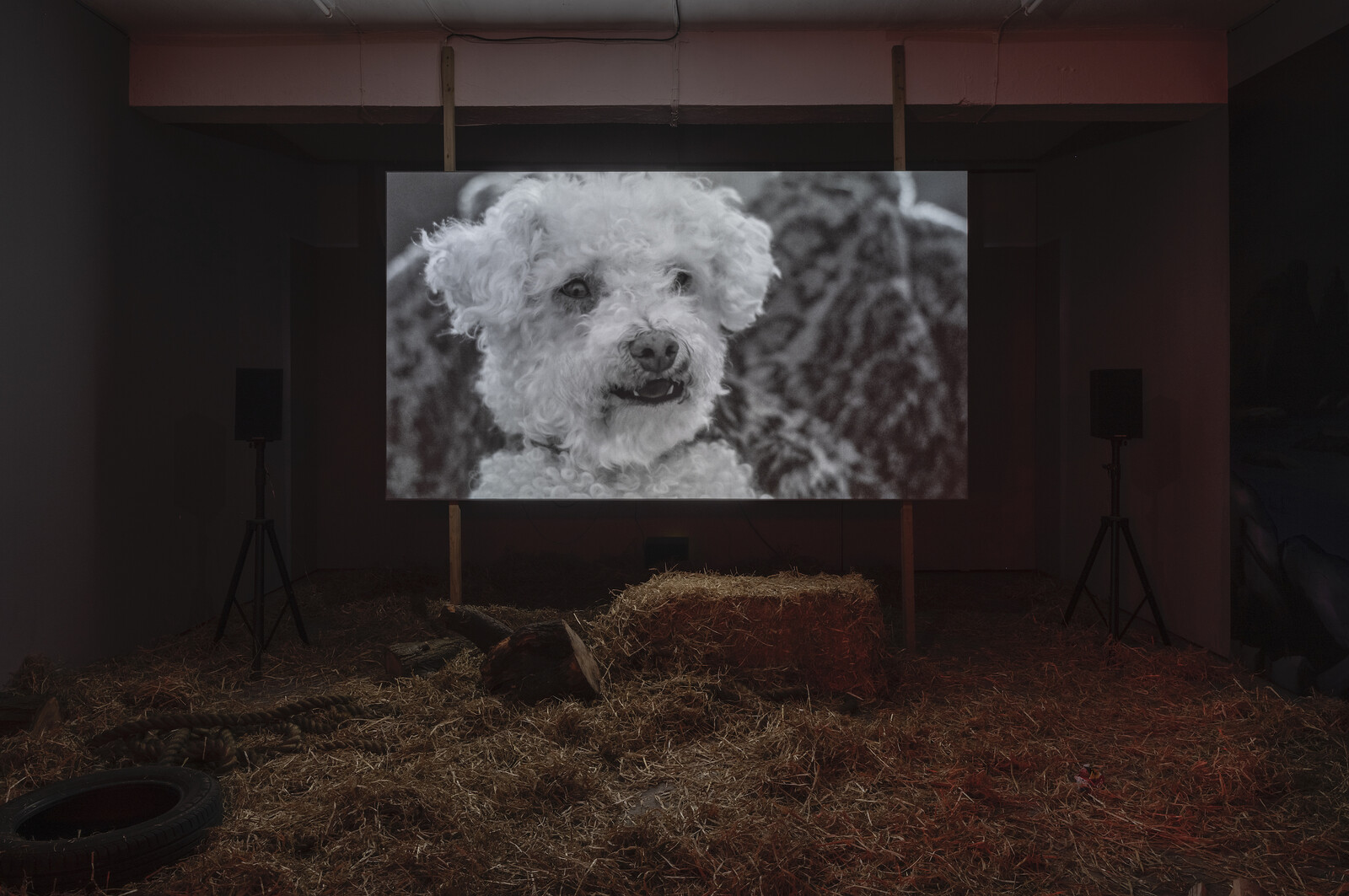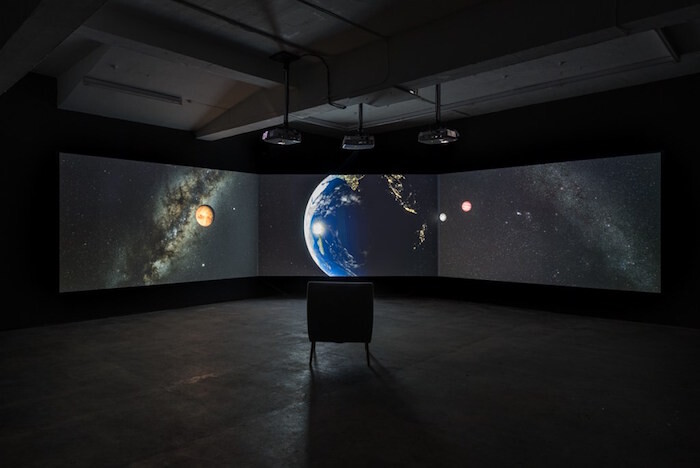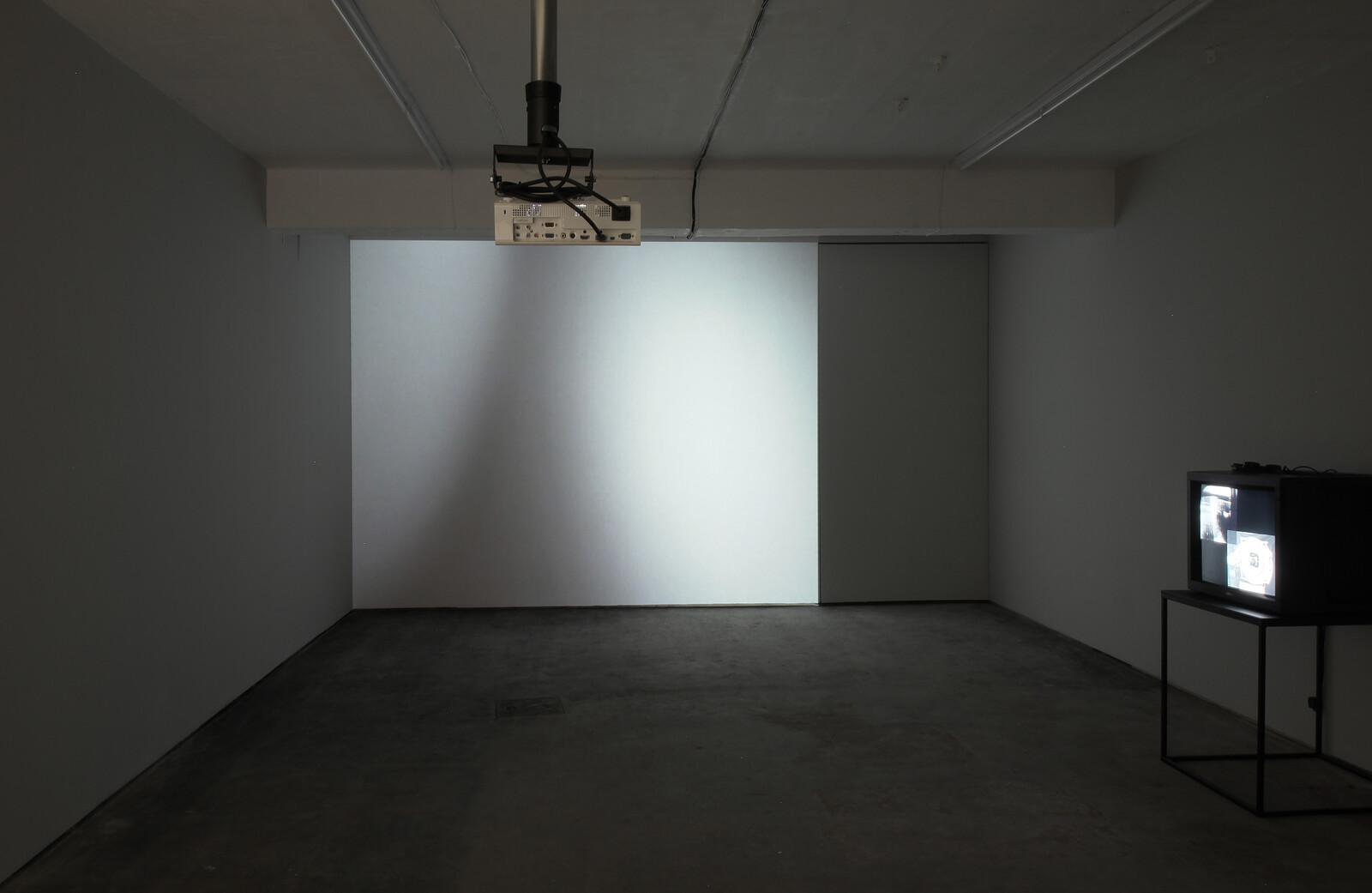Categories
Subjects
Authors
Artists
Venues
Locations
Calendar
Filter
Done
April 14, 2022 – Review
Patrick Goddard’s “Pedigree”
Tomas Weber

Watching animals in a zoo, Patrick Goddard’s show at Seventeen suggests, disapprovingly, is a bit like looking at art in a gallery: you stroll between marvels, whose only reason for being is to be seen. At the entrance to the gallery are three grisaille ink paintings (all 2022) behind reeded privacy glass. Each stars a bichon frise dog: watching a burning car (Whoopsie at the End of the World), saying “up against the wall!” through a speech bubble (Whoopsie, Up Against the Wall), and next to a naked woman under the word “APOCALYPSE” (Whoopsie’s Dream). Against the quietness of these works on paper, a sculptural installation occupies a whole wall. Plague (Downpour) (2022) consists of 200 falling frogs cast in recycled lead and attached to the wall. Each is unique, its body caught in baroque contortions: some graceful, some agonized, some resigned. These works introduce the show’s prevailing theme of our entanglements with animal life, from pets to pests.
Humans enlist animals into satisfying their needs and desires. Sometimes such animals are threatening or toxic; usually, they are unfathomable. As John Berger points out in “Why Look at Animals?,” a 1977 essay that inspired Goddard, animals have been stripped of …
December 12, 2017 – Review
David Blandy’s “The End of the World”
Patrick Langley

In his three-volume book Principles of Geology (1830-1833), Charles Lyell pioneered a theory whose clunky title belies its elegance. Uniformitarianism, as Lyell’s argument is known, suggests that the earth was shaped, over hundreds of millions of years, by incremental processes that are observable all around us: erosion, sedimentation, and so on. As Stephen Jay Gould remarks in his book Time’s Arrow, Time’s Cycle (1987): “the present must be our key to the past.” We can deduce how the earth was made because the forces that shaped it billions of years ago continue to do so today. Thanks in large part to Lyell’s work, geological accounts of the earth’s formation have supplanted Biblical ones. Scripture tells us that our planet was created 6,000 years ago. We now know that it is closer to 4.55 billion years old. The discovery of deep time—in John McPhee’s evocative phrase— compares with the Copernican and Darwinian revolutions in its importance to science. Deep time is also a vertiginous concept. Geological history mocks the brief careers of civilizations, dozens of which may rise and fall in the time it takes a coastline to crumble into the sea.
A dismal fact of life in the Anthropocene—the geological epoch …
September 24, 2014 – Review
"Neither"
Morgan Quaintance

No official record of the most cited influence on the work of contemporary artists is kept, but if a tally had been taken over the past five years, top of the list, just squeezing by Marcel Duchamp and Joseph Beuys, would be the experimental composer and benign orientalist John Cage. Not a year goes by, in the UK at least, that a group show, individual artist, or publishing platform doesn’t cite Cage, display his work, or admit direct usage of the chance strategies he pioneered. The composer is so overexposed, his oeuvre and ideas so thoroughly surveyed, it’s almost impossible to imagine being surprised by either new work, or an exhibition that doesn’t banally wheel out the same aleatoric alibi for some formless, a-curatorial display. Impossible, that is, until now.
“Neither,” the inaugural three-person show at Seventeen’s new London space is an austere and starkly beautiful exhibition. Tightly curated and unashamedly intellectual, it manages that rare, but often-strived-for alchemical feat of turning a complex philosophical proposition into a subtly compelling display. At the exhibition’s core is, thrillingly, an underexposed work by Cage that was also his last. What’s more remarkable is that One11 and 103 (1992), a combined 90-minute film and …